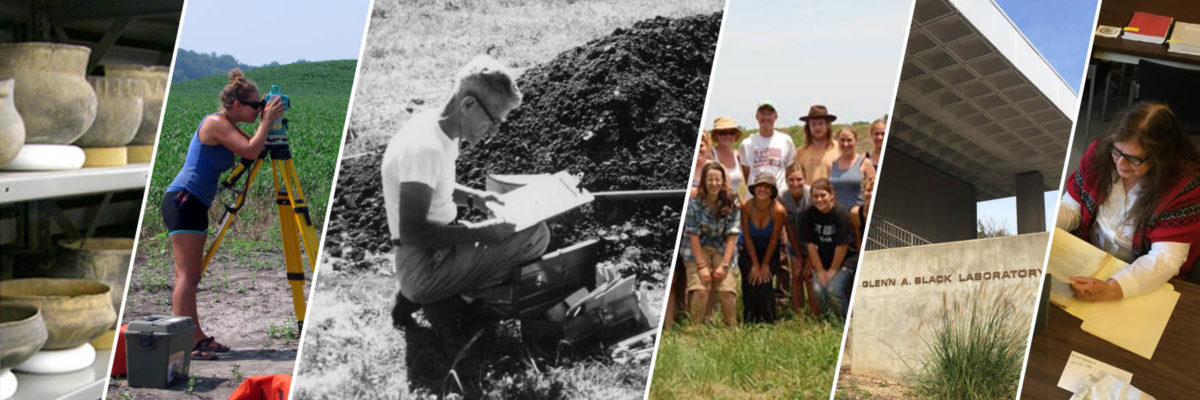by Hannah Rea
In addition to working with social media this semester, I’ve undertaken a project using archival resources here at the Lab. I’m working with newspaper articles from the 1938-39 purchase of the Angel Mounds site near Evansville, which I think is a good intersection of my two areas of study—journalism and history. Being as I am a newspaper nerd, it’s also just a lot of fun.
We don’t know much about the collection of articles I’m using, other than they are part of the Glenn Black papers. That being said, we can’t be entirely sure it was Glenn himself who collected them. But I do thing these articles were collected to serve a purpose, while other articles were excluded.
So far I’ve found some interesting things, including examples of how journalism has evolved in the past 80 years and the editorial nature of many of the articles. There are a lot of what I would call ‘Call to Action’ phrases which indicate the author of the article was more than just informing on a situation, but pushing for action to be taken. This would fall under what some call ‘activist journalism’ today, but the lines between editorial (that is, more opinion-driven) content and not was much more blurred. Now, as a general rule, Opinion columns are labeled as such.
One feature of newspaper coverage at this time in Evansville was the work of Karl Kae Knecht, affectionately referred to by readers as ‘K.K.K.’ He produced editorial cartoons for the Evansville Courier from 1906 to 1960, and was an almost-constant presence in Evansville homes. Knecht often took on activist themes in his work, at times calling for change on a local, national, and global level. His interests ranged from maritime safety after the 1912 Titanic disaster, to keeping morale up during the Second World War, to —for the purposes of my research— the purchase of Angel Mounds.
One of the most distinctive features of a K.K.K. cartoon is Kay the elephant, who shows up in nearly every one of his pieces and quickly became a recognizable signature. She’s at the bottom left of this cartoon —with her feathered headdress, she’s clearly meant as a caricature of a former Native resident of the Mounds site.
This brings up another feature of K.K.K.’s cartoons and of the coverage of the time: It’s just a few years after Howard Carter’s widely-publicized and global-attention-grabbing excavation of King Tut’s tomb, and archaeology in the 1930s is framed as ‘exotic’ and exciting. The focus of the public was on the artifacts and their potential value (usually monetary), not necessarily on the people to whom they belonged. The articles and this cartoon especially panders to that romanticized view of the study of the past.
When working with newspaper articles, you have to put them in the context in which they were written. They were produced for public consumption, to a public with little or no regard for the memory of the people who once lived and walked where they now stand. There was even less of an understanding that descendant groups were not only present around the United States, but actively being harmed by this method of undermining their existence and the memory of their ancestors.
This is not to say the coverage reflects the views of contemporary archaeologists and historians themselves; that’s a different research project. My focus is on that information meant for public consumption. Arguments can and have been made that the work of writers and artists like K.K.K. is a product of its time, a reflection of norms in how a group of people may be portrayed while at the same time their individual voices were stifled or ignored.
Everything from word choice to the amount of space dedicated to a column can tell us about the perceived importance of a topic. Reading these articles give a glimpse into the information being shared. While it can at times be offensive and shocking to our modern eyes, it shines a light on an important truth in our collective past.
For further information on Karl Kae Knecht, see:
MacLeod, James Lachlan. The Cartoons of Evansville’s Karl Kae Knecht: Half a Century of Artistic Activism (Charleston, SC: The History Press, 2017).



